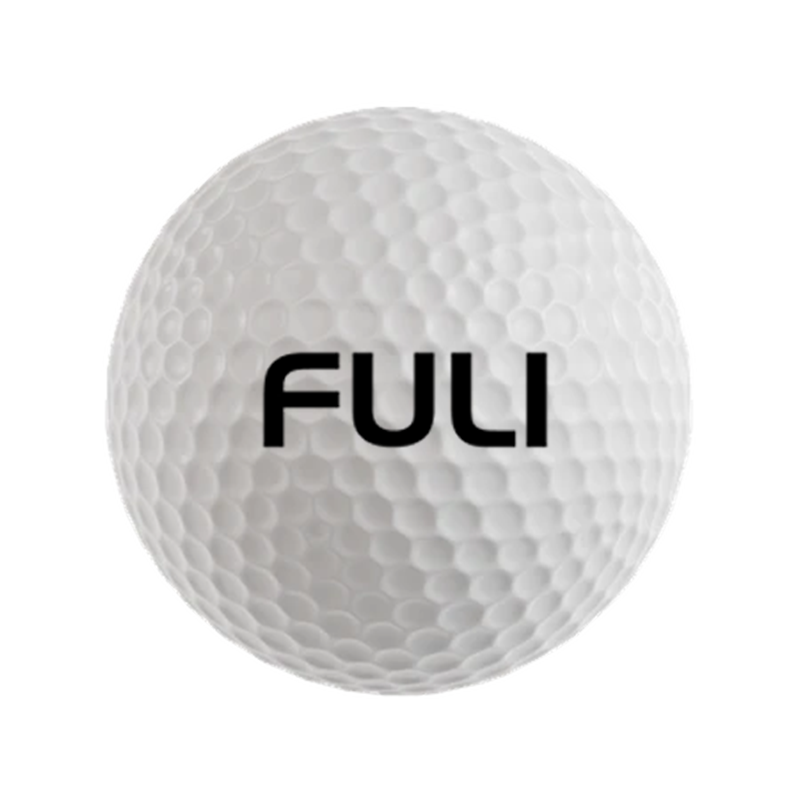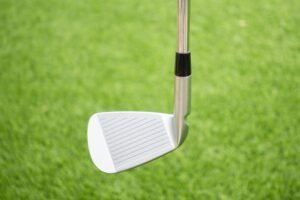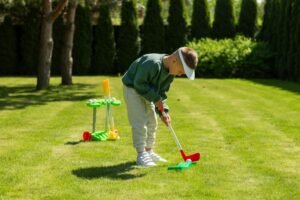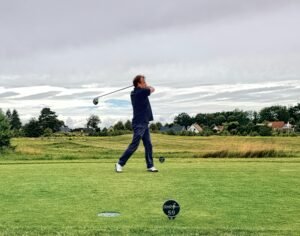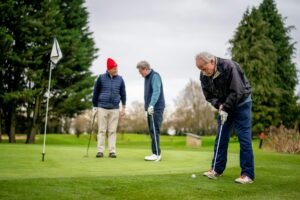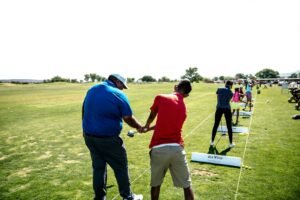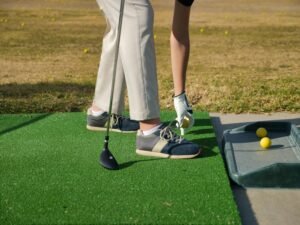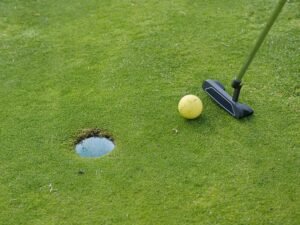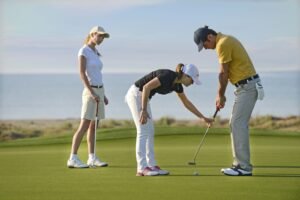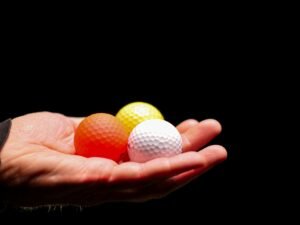
I hope you enjoy reading this blog post.
If you are looking professional golf manufacturer.
Swing With Skill, Stay Away From Injury: A Comprehensive Guide To Correct Golf Posture And Injury Prevention
May 28, 2025
On that vast and green golf course, the players have light figures and elegant manners. With each swing, one exudes composure and confidence. This unique charm has attracted countless enthusiasts to throw themselves into it and fully enjoy the fun brought by this sport. However, although golf seems relaxing and pleasant, it actually hides many risks of physical injury. Once there is a deviation in posture, problems such as sprain of the waist, strain of the shoulder, tenosynovitis of the wrist and wear and tear of the knee may follow one after another. It greatly reduced the originally pleasant stadium experience.
Mastering the correct golf posture is not only the key to improving hitting skills and achieving excellent results. It is even more the core for building a solid physical defense line and effectively preventing sports injuries. Conducting scientific and systematic exercises for the vulnerable parts in golf can undoubtedly further enhance the body’s protective ability. Help golfers swing safely and smoothly on the course.
Preparation Posture: Lay A Solid Foundation And Reduce The Burden
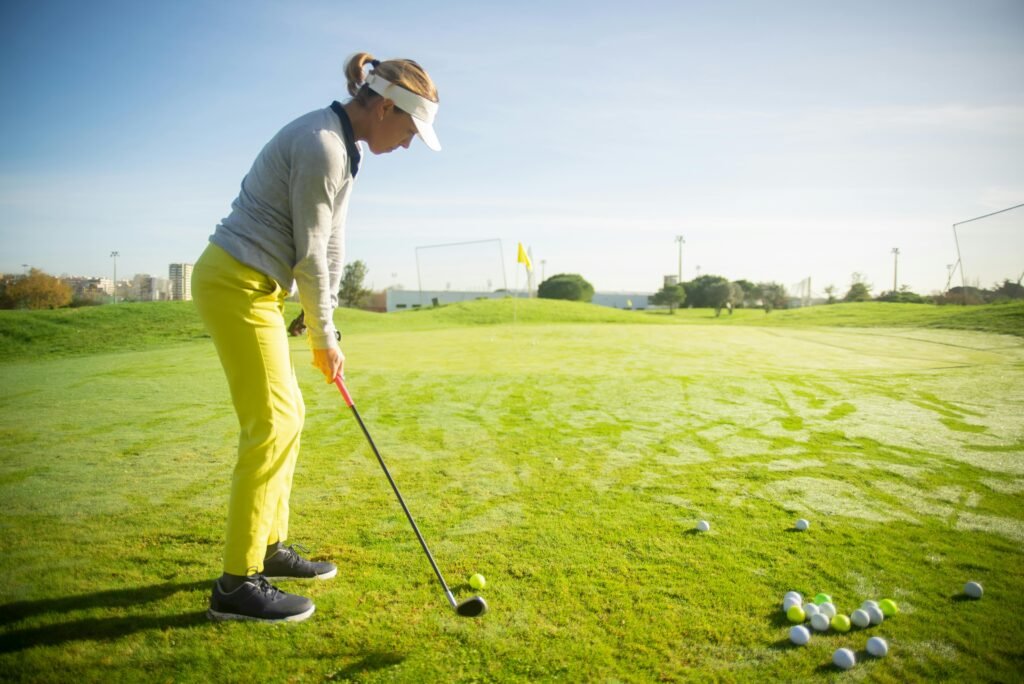
The preparatory posture, as the starting link and foundation of the swing movement, is of self-evident importance. Just as a solid foundation is to a tall building, it is directly related to the stability and safety of subsequent actions. There is no uniform standard for standing on both feet. It needs to be flexibly adjusted based on individual physical conditions, exercise habits and other factors.
Generally speaking, it is more appropriate for the feet to be shoulder-width apart or slightly wider. Slightly open your toes outward and keep them at an Angle of 10° to 15°. Standing in such a position, the body is like a stable tripod rooted in the ground. Provide solid support for the body’s rotation during the swing and ensure that the body maintains a good balance during the rotation process. To the greatest extent possible, avoid joint dislocation caused by body shaking and imbalance, as well as muscle strain due to uneven force distribution.
The reasonable distribution of the body’s center of gravity is equally crucial and should be evenly distributed on both feet. Meanwhile, the knees are slightly bent. It presents a highly elastic state, just like a spring ready to burst forth. When the knee is in a slightly bent state, its physiological structure can function better. It neither causes excessive pressure on the ligaments, meniscus and other tissues around the knee joint due to over-extension, nor increases the risk of injury. Nor will excessive bending impede the body’s power generation, affecting the smoothness and power transmission of the swing, and thus maintaining overall stability.
In addition, it is extremely important to keep the spine naturally straight. At this moment, one can imagine that there is an invisible yet tough thread on the top of the head continuously pulling upwards, driving the spine in the neck, back and waist to stretch section by section. Ultimately, a beautiful, smooth curve that conforms to human physiological mechanics is formed. Once incorrect postures such as bending over or hunchback occur during the preparation posture. The original mechanical balance of the body will be instantly disrupted, and the waist will be forced to bear additional pressure far beyond the normal range.
If this continues for a long time, the muscles in the waist are very likely to be damaged due to excessive fatigue, and waist diseases such as lumbar intervertebral disc protrusion may also strike quietly. When holding the club with both hands, the arms should hang naturally and the elbows should be slightly bent. Keep the club at an appropriate Angle to the ground, gently touch the tip of the club to the ground, and precisely position it in front of the line connecting your feet. Everything is ready, just waiting to start the smooth swing.
Swing Movement: Synergistic Force Application, Protecting The Joints
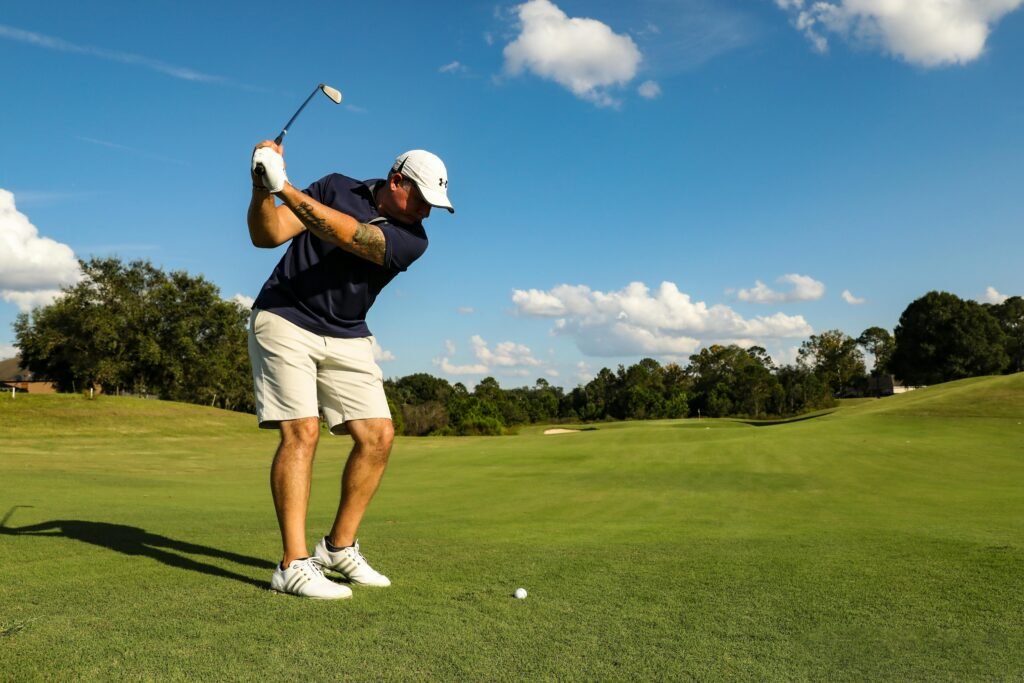
The swing is regarded as the most complex and crucial core link in golf, and the entire process is clearly divided into two important stages: the upper stroke and the lower stroke. When climbing the pole, the body takes its own central axis as the core of rotation. The force is exerted from the shoulders to drive the arms to rotate slowly along a specific trajectory. During this period, the body’s center of gravity also needs to be gradually and synchronously shifted to the right foot (for those holding the pole with the right hand).
During this delicate and continuous movement, the Angle between the arm and the body needs to remain relatively stable all the time. If the Angle is overly opened, the muscles on the outer side of the shoulder will be overstretched and subjected to an exceptionally strong pulling force. If the Angle is overly narrowed, the inner shoulder muscles will be overburdened. Both of these extreme situations are highly likely to cause rotator cuff injuries, resulting in shoulder pain and limited movement. It seriously affects the golf experience.
Figuratively speaking, the role of the shoulder during the swing is like that of the bowstring when drawing a bow. When drawing the bow, if too much force is applied or the posture is slightly off, the bowstring is very likely to break. The same is true of the shoulders. Any minor mistake in movement may cause irreversible damage to them.
During the lower stage, the body’s center of gravity needs to be rapidly and precisely shifted from the right foot to the left foot. By ingeniously leveraging the powerful synergy generated from the rapid rotation of the body and the shift of the center of gravity, it smoothly drives the arm and the club to swing downward with a thunderous force. It should be emphasized that this is by no means a simple movement that can be accomplished merely by relying on arm strength. Rather, it is a process in which all parts of the body work in coordination and exert force together.
If one relies solely on the force exerted by the arm at the moment of hitting the ball, the muscles of the wrist and arm will be subjected to a huge impact force. It undoubtedly lays hidden dangers for injuries such as tenosynovitis and muscle strains. Ideally, all parts of the body, from the legs and waist, to the shoulders, arms, and even the wrists. All should fit and cooperate closely with each other like the parts in a precision mechanical device. Transfer power to the club in the smoothest and most efficient way to achieve perfect output and precise control of power.
Hitting Action: Precise Control, Avoiding Impact
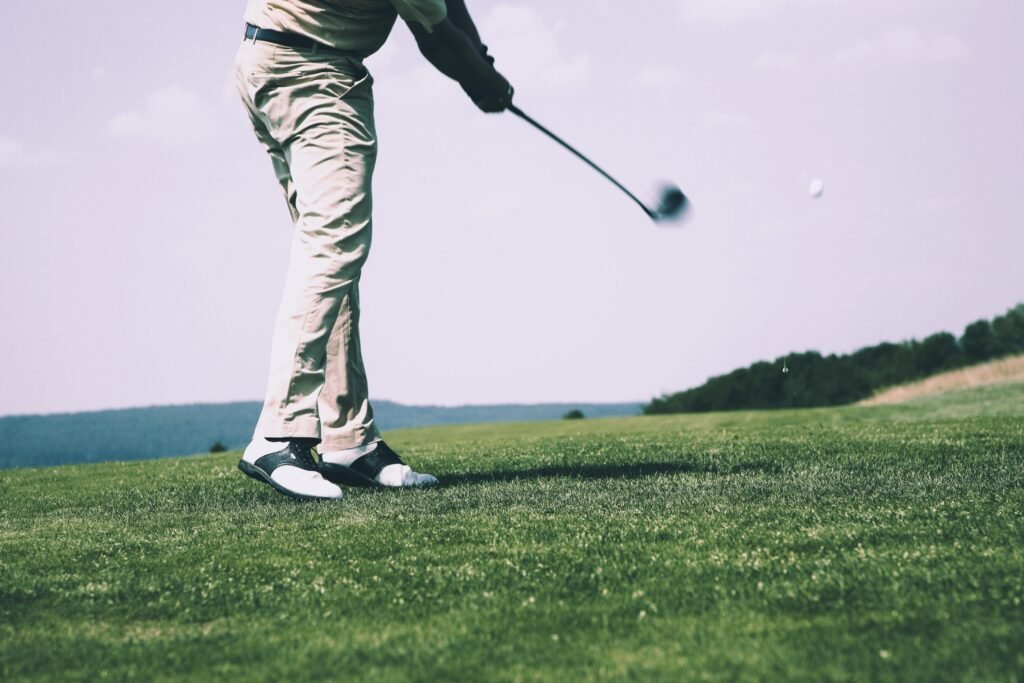
The moment of hitting the ball can be regarded as the “golden moment” that determines the effect of the shot and the safety of the body. At this critical moment, the body must remain highly stable. The head was fixed as if nailed, and the eyes were tightly locked onto the target ball. The eyes are sharp and piercing, just like a sniper concentrating on locking onto its prey. During the process of hitting the ball, it mainly relies on the rhythmic rotation of the body and the just-right swinging of the arms. Concentrate all the body’s strength highly on the club surface to achieve precise strikes on the ball.
At this point, any slight body swaying or excessive twisting behavior. It is all like throwing huge stones into a calm lake, which not only causes the hitting direction to deviate seriously from the predetermined track. This can cause the ball to lose control of its landing point and instantly impose a huge torsional force on the waist and shoulders. This sudden and powerful external force is highly likely to break through the endurance limit of the muscles and joints in the waist and shoulders. It greatly increases the risk of injury, instantly distorting the originally fun sport of golf.
The follow-up swing after hitting the ball should not be underestimated either. It is not an optional additional link. But it is an indispensable and important part of the entire batting process. After the shot is completed, the club should follow the inertia of the body’s force application and naturally extend forward and upward with the swing. The arms and body should maintain continuous and smooth movements as always, in one go. A complete and standard follow-up action. It can fully and effectively dissipate the tremendous force released by the body at the moment of hitting the ball. It’s like slowly releasing a spring that has been compressed to the extreme, allowing its elastic force to be released smoothly.
Conversely, if the swing is incomplete, suddenly stops or changes direction without any warning. The impact force endured by the body cannot be buffered and dispersed in a timely and effective manner. This is just like a car traveling at high speed suddenly braking sharply, which can cause serious damage to all the components of the vehicle. It will cause additional and unbearable damage to the joints and muscles of the body, greatly increasing the risk of sports injuries.
Targeted Exercise: Strengthen Vulnerable Areas And Enhance Athletic Performance

Waist Exercise
Plank:
- When doing plank exercises, you first need to lie prone on a yoga mat or a flat and stable ground. The elbows are slightly bent and firmly supported on the ground. Make sure your shoulders and elbow joints are perpendicular to the ground. This is a key support point for maintaining body stability. Keep both feet firmly on the ground, and then exert force to slowly lift the entire body off the ground. During this process, always pay attention to keeping your torso straight. Make sure that the head, shoulders, hips and ankles are always on the same plane, as if the body is tightly fixed by an invisible plate.
- At the same time, fully mobilize the strength of the abdominal muscles and pelvic floor muscles. Put it in a tightened state and feel as if the spine is being continuously elongated by an upward force. During the execution of each group of movements, keep your eyes on the ground all the time. Maintain a uniform and steady breathing rhythm. Each set should be held for 60 seconds. Four sets are arranged for each training session, and the interval between sets is strictly controlled to be no more than 20 seconds. By persistently and regularly doing the plank exercises over a long period of time, one can effectively train the core muscle groups deep in the waist. Significantly enhance the stability of the lumbar vertebrae, laying a solid foundation for the waist to withstand various external impacts during golf.
Lie on your back with knees bent and your abdomen drawn in:
- Lie on your back on a soft yoga mat with your legs bent naturally. Keep your feet flat on the ground to provide stable support for your body. Hold your head gently with both hands, but be careful not to pull your neck too hard. After getting ready, fully mobilize the strength of the abdominal muscles. Take this as the main point of force and slowly lift your upper body. At the same time, both legs should be bent and lifted simultaneously, and the thighs should be as close to the abdomen as possible. During this process, one can clearly feel the strong contraction of the abdominal and lumbar muscles. Complete 15 to 20 repetitions for each set of movements and do 3 to 4 sets for each training session.
- This exercise can comprehensively enhance the strength of the waist muscles and effectively improve the flexibility of the waist. Make the waist more flexible and stable in actions such as golf swings, significantly reducing the risk of waist injuries.
Shoulder Exercise
Shoulder extension with elastic band:
- First, place your feet firmly on the elastic band to ensure it doesn’t slide randomly. Hold the two ends of the resistance band with both hands respectively, let your arms hang naturally, and keep a relaxed state. When starting the movement, be sure to keep your elbow slightly bent. This detail can effectively prevent the arm muscles from getting injured due to excessive stretching. Next, apply force slowly and spread your arms horizontally to the sides of your body. Until the position is level with the shoulders, at this point, the stretching of the rotator cuff muscles can be clearly felt.
- Then, lower the arm at the same slow and steady speed and return to the starting position. Repeat each set 12 to 15 times, and arrange 3 sets for each training session. Persist in the elastic band shoulder abduction exercise for a long time. It can precisely and effectively enhance the strength of the rotator cuff muscle group, creating a solid “protective barrier” for the shoulder joint. Significantly enhance the stability and flexibility of the shoulder joint in golf and reduce the possibility of shoulder injuries.
Angel against the Wall:
- Choose a flat and smooth wall and stand with your back against it. Feet and shoulder are the same as wide spacing to adjust, guarantee the stability of the body can stand up. Make the head, upper back, hips and heels closely adhere to the wall. Forming a straight line is the basis for ensuring the standardization of movements. Arms elbow flexion was 90 degrees, two hands stick a wall. Start from the starting position and slide the arm upwards slowly and at a constant speed. Until the arm is fully extended and tightly pressed against the wall. At this moment, the body will present a posture similar to “angel’s wings spread out”.
- After reaching the peak, slowly lower your arms at the same rhythm and return to the initial elbow bending position. Perform 10 to 12 repetitions in each set, and complete 3 sets in each training session. This movement can effectively improve the range of motion of the shoulders and enhance the strength and coordination of the muscles around the shoulders. Help golf enthusiasts better control the movement of their shoulders during the swing and reduce the risk of shoulder injuries.
Wrist Exercise
Wrist flexion and extension exercise:
- Find a comfortable chair, sit down steadily, and place your forearms flat on the table. Make sure that the wrist part can naturally extend beyond the edge of the table without any obstruction. Hold a dumbbell weight is lighter, the weight should choose according to individual wrist force. It is advisable to be able to feel a certain degree of resistance without causing excessive burden.
- When practicing, bend your wrist upwards first. Feel the contraction and stretching of the muscles in the back of your wrist until they reach their maximum. Slowly bend your wrist downward again and experience the force application process of the muscles on the palm side of your wrist. Repeat each direction 15 to 20 times, and do 3 sets of training each time. By continuously performing wrist flexion and extension exercises, the strength of the wrist can be gradually enhanced. Significantly enhance the flexibility of the wrist, enabling it to control the club more precisely and stably at the moment of hitting the golf ball. Reduce the risk of injury caused by insufficient wrist strength or poor flexibility.
Grip strengthener training:
- Choose a grip strengthener that suits your grip strength level. When starting the training, hold the grip strengthener with all your might. Hold for 3 to 5 seconds to allow the muscles in your hands and wrists to fully contract and feel the concentrated burst of power. Then, slowly relax the handgrip strengthener to give the muscles a short rest. Repeat each set 20 to 30 times, and do 3 to 4 sets for each training session.
- Persisting in grip strength training for a long time can comprehensively enhance the strength of the hands and wrists. Enhance the collaborative ability between hand muscles and wrist joints. In golf, effectively enhancing the stability of grip and the efficiency of power transmission when hitting the ball. Greatly reduce the chance of wrist injury during the hitting process.
Knee Exercise
Static squat:
- Find a solid wall, stand with your back against it and your feet apart. Keep the distance shoulder-width apart and maintain body balance. Squat slowly and always pay attention to the position of your knees during the squatting process. Make sure the knees do not extend beyond the toes. This is crucial for protecting the knee joints. When the thighs parallel to the ground, stop crouch down action, maintain this pose.
- Everyone’s physical condition and endurance are different. The duration of persistence can be flexibly adjusted between 30 seconds and 2 minutes according to one’s own actual situation. Conduct 3 to 4 sets in each training session. Static squat training can specifically enhance the strength of the muscles around the knee joint and significantly improve the stability of the knee. To enable the knee joint to better withstand the body weight and the impact force brought by the sport during golf, and effectively prevent knee injuries.
Straight leg raise:
- Lie on your back on a soft and comfortable mat. Keep your legs straight and together, and keep your body relaxed. Slowly lift one of the legs upwards, with the lifting Angle controlled between 30° and 45° from the ground. During this process, keep your legs straight and do not bend them. After reaching the designated Angle, hold for 3 to 5 seconds to fully feel the contraction of the muscles in the front of your thighs. Then slowly lower this leg and return to the starting position.
- Repeat the same movement with the other leg. Perform 15 to 20 repetitions per set for each leg and 3 to 4 sets for each training session. The straight leg raise training can effectively exercise the quadriceps on the front of the thighs and enhance their strength. Reduce the burden on the knees during daily activities and golf, providing a strong guarantee for knee health.
In the long journey of golf, maintaining the correct posture is not something that can be achieved overnight. It requires golf enthusiasts to invest a lot of time and energy. Through continuous practice and self-correction, gradually develop muscle memory and correct exercise habits. During this process, it is particularly crucial to seek guidance from professional coaches on a regular basis. Professional coaches with the rich experience and keen observation, can accurately pointed out the mistakes and deficiencies in action. And give scientific and reasonable suggestions for improvement.
Meanwhile, make ingenious use of modern technological tools such as video analysis. Conduct all-round and multi-angle observation and analysis of one’s own golf movements. Also can help us more intuitive, found the problem clearly, timely adjustment and improvement. In addition, integrate appropriate strength training and flexibility exercises organically into the daily training plan. It can not only significantly enhance muscle strength, making the body feel more powerful and explosive during exercise. It can also greatly enhance the flexibility and stability of joints, providing a solid physical foundation for maintaining the correct posture.
When we are on the golf course, we swing the club in a standard and graceful posture. And when strengthening those vulnerable parts through persistent targeted training, what is gained is not only an elegant court posture and praiseworthy excellent ball skills. It is also a precious guarantee to stay away from the trouble of sports injuries and enjoy a healthy sports life.
FAQS
How do I choose the right golf ball for my skill layer?
Beginners should start with two-layer balls for ease of use and affordability. Intermediate players might benefit from three-layer balls for better control.
Advanced players can explore four or five-layer options to enhance their performance.
Are more layers always better?
Not necessarily. While more layers can offer advanced performance features, they may not be suitable for every player.
Beginners might find multi-layer balls harder to control, while more experienced golfers can benefit from the added complexity.
What is Fuli lead time?
Usually, we ship orders in 2 weeks. But it will take a little longer if we have the heavy burden of production tasks. It also takes more time for customized products.
Can the weather affect the choice of golf ball?
Absolutely. In colder weather, a softer ball might provide better feel, while in warmer conditions, a firmer ball might maintain distance better.
Additionally, wet conditions may call for balls that offer better traction and control.
How often should I change my golf balls?
Golf balls should be replaced if they show visible signs of damage (scrapes, cuts) or if you notice a decline in performance.
Regular players may want to change balls every few rounds, while casual players can go longer.
Leave a Reply
Your email address will not be published. Required fields are marked *
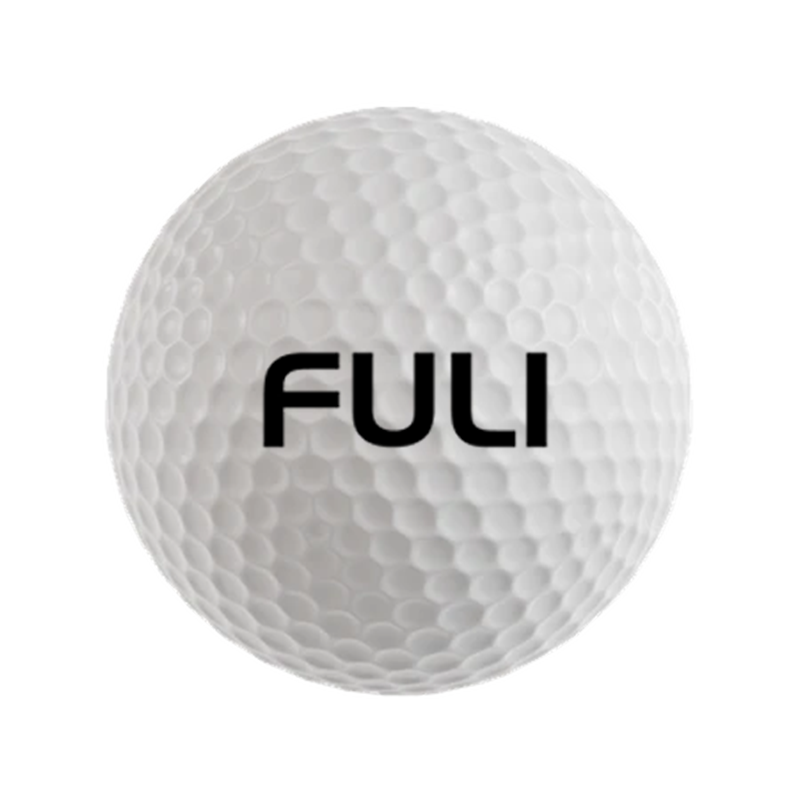
Are you looking for
GOLF BALL?
Offers Suitable Golf For Wholesalers And Professionals

